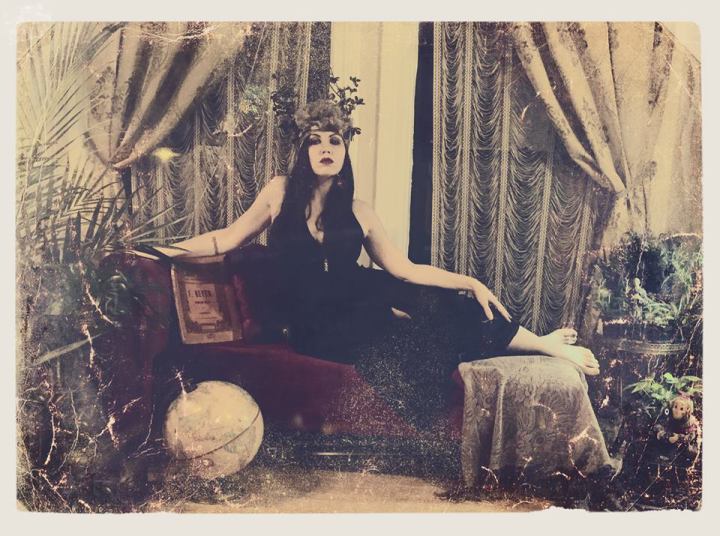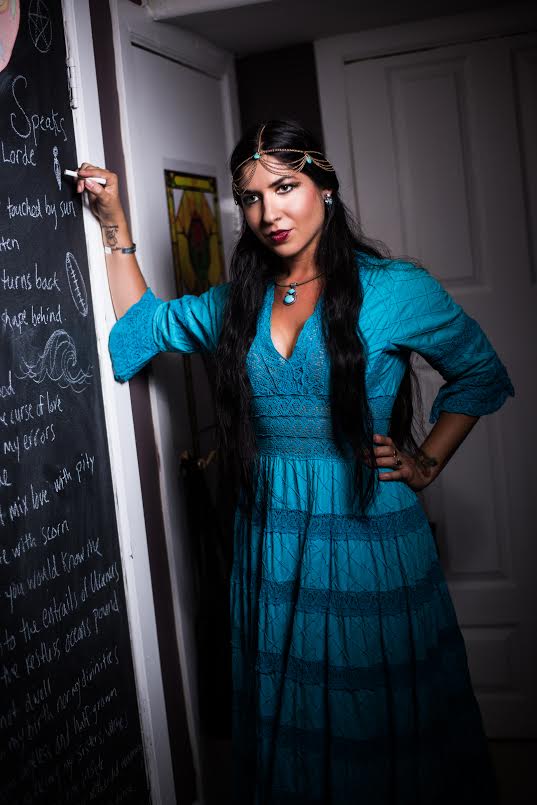If you’re an artist or writer and you’re feeling a little tapped out, check out this Quail Bell Magazine essay/interview “The Symbiotic Magic of Yoga and Writing: Retreat, Ritual, and a Chat with the Women of the Cambridge Writers’ Workshop” about the benefits of practicing yoga alongside your writing practice and the Cambridge Writers’ Workshop Summer Yoga & Writing Retreat at the Château de Verderonne, France. Although the CWW has marked the retreat application deadline as May 15th, admissions are rolling until filled and there are still a few spaces. Apply A.S.A.P.

Elissa doing yoga in front of the Château de Verderonne, Image source: Quail Bell Magazine
Some quotes from “The Symbiotic Magic of Yoga and Writing“–
Robert Olen Butler, Pulitzer Prize winner and author of The Christopher Marlowe Cobb Thriller Series, argues that ritual is the key to creating art. In From Where You Dream: the process of writing fiction, he explains that you must prepare for writing by entering a trance and focusing on the breath in a quiet space, much like the centering meditation of a yoga class. Once you’re there and centered, you must stay present with sensation and allow yourself to create directly and organically from that “dream space.” Like in yoga, you set an intention to stay open to all experience and at the same time, remain unattached to ideas, hence the popular mantra, “I am not my mind.” Butler writes that the best art comes from this “moment to moment sensual experience,” and “non-art” is full of summarized or intellectualized reported experience.
Those “moment to moment sensory experience[s]” are much more nuanced than you’d think—all the available senses are involved. In my Yoga Teacher Training at Kripalu, I learned that the body holds memories, a phenomenon addressed in the study of somatics, a branch of psychology that examines the mind-body connection. In certain poses, you may feel spontaneously happy, sad, angry, frightened, blissful—you may be flooded with memories, sensations, and epiphanies. You may weep or laugh without knowing why (or knowing all too well why). Stay with present if you can: breathe, relax, feel, watch, allow (or BRFWA). Your body is releasing trapped energy, memories, and emotions—parts of your past that you have been carrying unconsciously, perhaps as tension, shortness of breath, pain, or anxiety. What does the experience feel like, smell like, look like, sound like, and taste like? The information you need to have a cathartic experience is the same information you need to create one on the page. Butler argues that in order to make art, we have to dive into the unconscious mind, confront whatever pain dwells there, and use that intense awareness to write from the “white hot center.” This is just another way to access the unconscious.

The renovated stables
Jessica: What are some of your favorite yoga poses, breathing exercises, and/or meditations for stimulating (or sustaining) creativity?
Elissa: To increase creativity and flow, hip-openers like Pigeon pose and Lizard pose (Uttan Pristhasana) are my favorite. When you release tension in your hips, you also release the emotions that come bubbling up. The hips and pelvis are related to the Svadisthana chakra and the water element which governs the area of creation and creativity. These postures help clear writer’s block by encouraging creative energy to flow without over-efforting.
Also, Nadi Shodana pranayama (also called alternate nostril breathing) is a wonderful breathing technique to begin or complete your practice and is appropriate for anyone. It stimulates a daydream-like state, where our senses draw in (called pratyahara) and we can disengage from the external world. It helps us develop the focus and concentration needed in meditation. I think any meditation that works for you is excellent. Meditation is the key to open the mind to inspired creative thought. It brings you back to yourself, to moments of truth, without mind chatter, self-criticism and self-consciousness.

I’m enjoying yoga with Elissa
Jessica: How does community support your yoga practice and/or artistic practice?
Norma: The image of the solitary writer is deeply rooted in the romanticized myth of the lone, genius writer. In truth, most great writers were part of communities comprised of other writers, intellectuals, and artists that inspired each other. Many great literary movements and unforgettable manifestos came out of the collaboration of such communities of writers….In addition to encouragement, support, and critical feedback, I think one of the most powerful things a community can offer a writer is accountability. If you know that people are counting on you, then you are more likely to follow through. Whether your goals are short term or long term, a community can hold you to your word.
Of course, the same principles apply to a community supporting one’s yoga practice.
For the rest of the essay/interview: http://www.quailbellmagazine.com/the-real/essay-the-symbiotic-magic-of-yoga-and-writing

Applications rolling till filled
If you want to read more about the importance of cultivating a community, check out Rita and Norma’s interview with VIDA & HERKIND “Community as Catharsis: A Conversation with Rita Banerjee & Diana Norma Szokolyai”



















